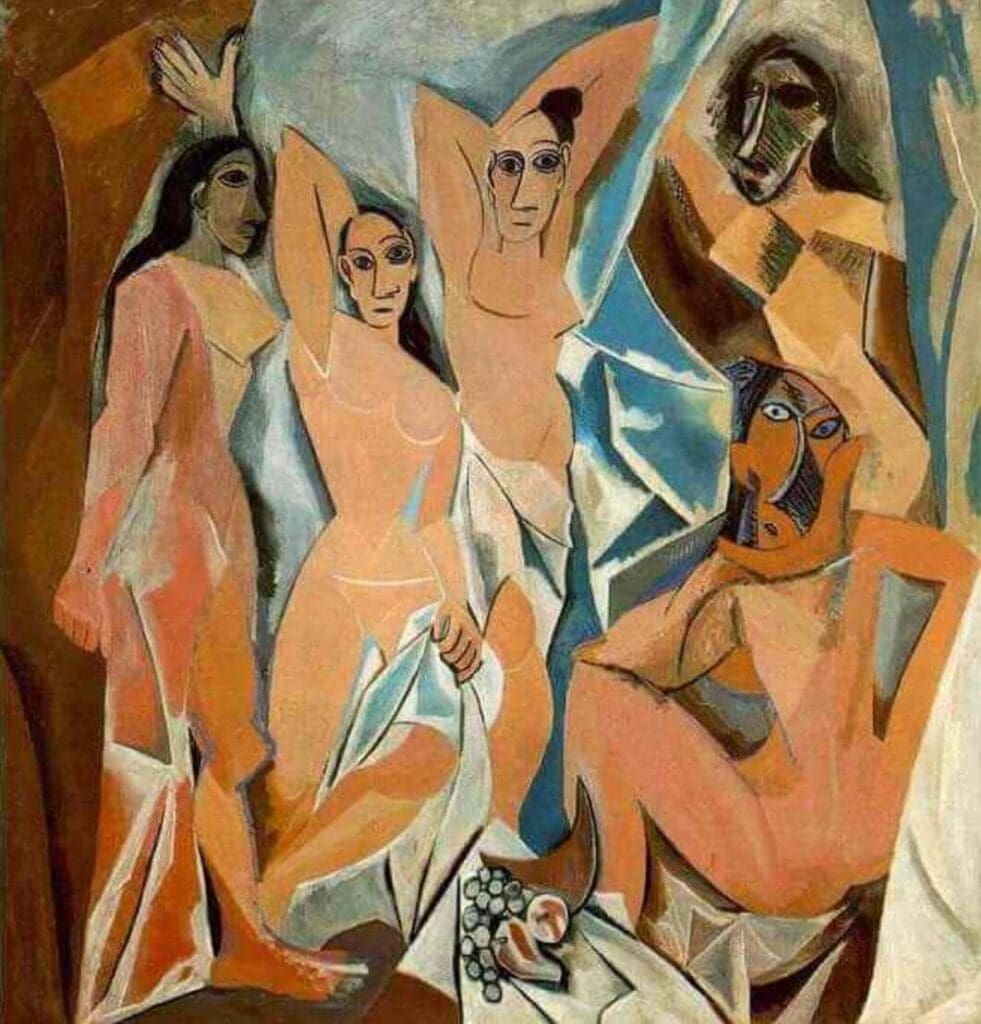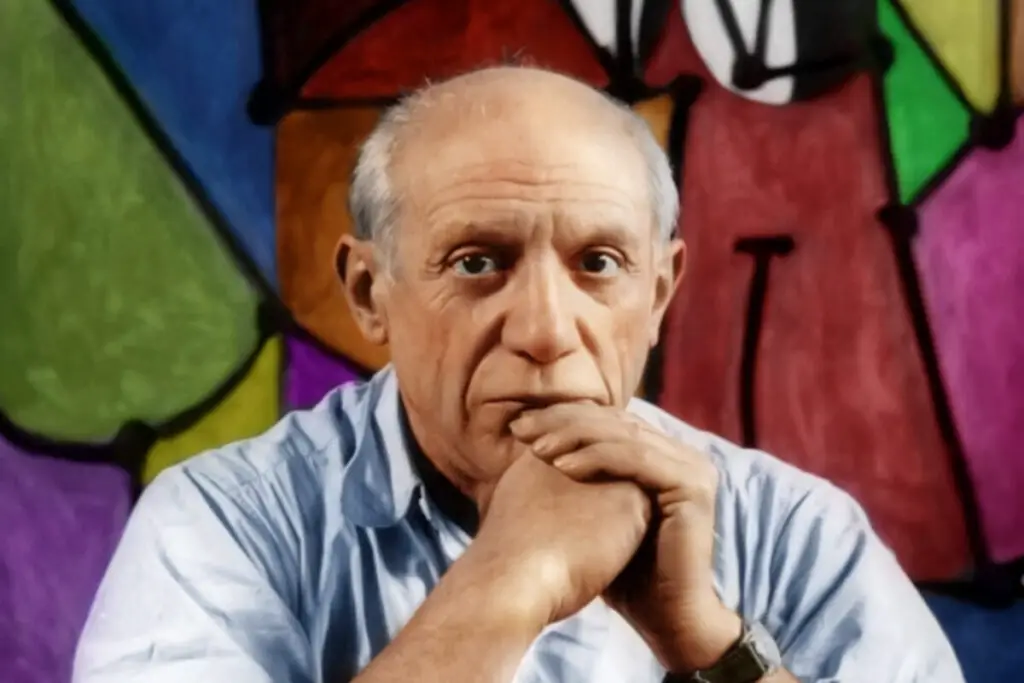Immerse yourself in an insightful exploration of the life and works of one of the world’s most influential artists, Pablo Picasso. As we unfold the intricate tapestry of his early life, colored with struggles, inspirations, and compelling influences, an entirely new perspective on his astonishing works of art presents itself.
From the birth of Cubism to historically momentous paintings such as ‘Les Demoiselles d’Avignon’ and ‘Guernica,’ Picasso’s genius has a profound reach. This exploration isn’t just about viewing Picasso’s masterpieces but delving into the stories they encompass and their broader implications on our world.
Table of Contents
- Picasso’s Early Life and Influences
- Picasso’s Masterpieces
- Picasso’s Impact on the Art Movement
- Related Questions
Picasso’s Early Life and Influences
Picasso: The Early Years and Impact on Iconic Creations

Born to creative parents, little did they know that their child, Pablo Picasso, would walk out of their shadow to become one of the most influential artists of the 20th century. Picasso’s passion for painting was nurtured early, thanks to his father’s influence and the artistic environment of late 19th-century Spain.
Picasso’s early life in Málaga, Barcelona, and Madrid was where he discovered and developed his styles. His father, Don José Ruiz Blasco, a traditional artist by profession, first introduced him to realistic art practices. Picasso quickly absorbed his father’s teachings, eclipsing his father’s skill level at a young age.
Picasso’s Blue Period, the first significant stage in his artistic journey, can be directly tied to his struggles and sympathies. Following the death of his close friend Carlos Casagemas, a melancholic Picasso leaned towards shades of blue and blue-green to depict the sorrow and poverty of his subjects. Harrowing narratives are woven across this collection of early paintings, revealing the depths of Picasso’s empathy for those living on society’s margins.
Shortly after the Blue Period came Picasso’s Rose Period, which was quite literally named after its dominant rose color palette. During this period, Picasso was drawn towards warm, earthy tones, a striking contrast from his previous works. Paris, known globally as the haven for bohemians, greatly influenced this evolution. The newfound imagery in his work—circus performers, acrobats, and clowns—was inspired by his fascination with a local circus. As his perspectives started to change, so too did his artwork.
Alongside his emotional development, his intellectual exposure also influenced his artistic journey. Picasso spent countless hours losing himself in the enriching ambiance of Els Quatre Gats, a local haunt in Barcelona for creatives of all kinds. Debates and discussions fueled his yearning to learn and explore. His thirst for knowledge offered him a broader scope of art movements and styles, including African Art. It led him to co-create Cubism with French artist Georges Braque—stirring a revolution in the European art scene.
Cubism was Picasso’s liberation, which involved deconstructing and reassembling objects into abstract forms. He relished the opportunity to free himself from traditional perspectives. Every painting became a new reality, a prime example being “Les Demoiselles d’Avignon,” one of the definitive masterpieces of 20th-century art.
Furthermore, an analysis of Picasso’s prominent works would be incomplete without referencing his romantic relationships. These powerful affiliations significantly influenced the stages of his artistic evolution and introduced us to the striking portraits of his lovers.
In sum, Pablo Picasso, one of art history’s titans, owes his impressive versatility and ingenuity in art to an amalgamation of personal, emotional, intellectual, and cultural influences. His early life experiences were crucial in forming his unique styles and the iconic paintings they birthed. A mosaic of his early life experiences, Picasso’s artworks are timeless testaments to his technical mastery and profound empathy.
Picasso’s Masterpieces
Art and Picasso: Beyond the Canvas
One cannot delve into the depths of art history without coming across the realm of Pablo Picasso. Picasso’s work is complex, multi-faceted, and transformative, constantly pushing boundaries and challenging norms. His remarkable contribution to art unequivocally made him one of the most influential artists of the 20th century, leaving a profound impact on modern and contemporary art that lingers to this day.
Shining a spotlight on Picasso’s most celebrated paintings, stirred by the artist’s ongoing desire to innovate and transform through art, one notices his portfolio’s distinct attributes. Notably, Picasso became renowned for his paintings’ tangible sheer emotion and dramatic symbolism, symbolizing personal trials, passionate relationships, and sociopolitical issues that marked his life and times.
The heart essence of Picasso’s Blue Period is the embodiment of angst, desolation, and melancholy, ignited by the suicide of his close friend Carlos Casagemas. Conversely, the dominance of a warmer, cheerful palette depicting clowns, harlequins, and acrobats marks the Rose Period, highly inspired by Paris’s vibrant café-circus lifestyle.

The exploration of the Cubist Period prompted artistic audacity. Picasso’s traditional use of perspective was radically deformed, as seen in “Les Demoiselles d’Avignon” and “Guernica.” The paintings’ subjects were skillfully fragmented and reconstructed into simplified geometric shapes, allowing viewers to simultaneously perceive the artwork from diverse viewpoints—a groundbreaking approach that would revolutionize Western art history.

Women’s roles are unquestionably significant in the personal realm of Picasso’s artistic impressions. His romantic partnerships served as muses, frequently painted as beautiful or resentful figures, vividly reflecting his tempestuous affairs. The heart-rending ‘Mother and Child’ series convincingly showcases Picasso’s mastery in expressing intense emotion and passion, articulated through the raw and evocative depiction of the maternal bond.
Moreover, Picasso always assimilated and profoundly internalized the art forms and cultures exposed to him. His African Period art, inspired by the aesthetic elements of African tribal sculptures, introduced a fresh dimension to his painting style. In his work, Picasso’s stylistic adaptation of Iberian sculpture integrates a symbiosis of classical and contemporary impressions.
In summation, Picasso’s artistic journey embodies a ceaseless pursuit of innovation, challenging the conventional and faithfully capturing the vibrancy and volatility of life. Anchored on personal experiences and societal encounters, Picasso’s art transcends the boundaries of canvas and time, continuing to intrigue and inspire art connoisseurs worldwide.
Picasso’s Impact on the Art Movement
Picasso’s remarkable genius transcended geographical boundaries and time frames. His prolific career, spanning more than seven decades, significantly impacted the global art movement and created a lasting influence that continues to inspire artists today. The exploration of Picasso’s influence extends beyond discussing his distinct periods. By evaluating multiple facets of his work, we gain insight into how his thematic concerns, stylistic development, role of muses, and utilization of varying influences shaped modern and contemporary art.
One of the fundamental reasons Picasso’s art continues to impact the global art community severely is its poignant themes. His Blue Period, in particular, exemplified his capacity for expressing deep human emotion through art. Laden with angst and melancholy, his Blue Period was brutally authentic—an exploration of sorrow and desolation. The universality of these themes facilitated a new level of emotional depth in art, influencing artists worldwide to tackle complex, profound emotions in their work.
Picasso’s Rose Period marked a shift in mood with a newfound depiction of clowns and acrobats. His heartfelt poignancy through these subjects unveiled a new thematic framework in art, stimulating a broader utilization of seemingly ordinary, even marginalized individuals as gateways to convey emotional depth and societal commentary.

However, it wasn’t just his themes that profoundly impacted the art world. Picasso’s stylistic development, most notably during his Cubist Period, completely altered the perception of visual art. He dismantled the principles of traditional perspective that had dominated since the Renaissance, introducing a radical approach where objects were fragmented and reconstructed, offering multiple viewpoints at once. This profound interrogation of traditional painting techniques forever changed the path of modern art, influencing numerous future art movements like Dada, Surrealism, and pop art, among others.
Women played a critical role in Picasso’s evolution as an artist. Often, his muses, the women in his life, inspired some of his best works, their personas captured and immortalized on canvas. This focus on the relationship between an artist and muse cantered the female experience in art from a unique perspective, instigating a domino effect where more artists felt encouraged to explore this dynamic.
Moreover, Picasso’s African Period and subsequent incorporation of Iberian sculpture into his work introduced an essential aspect of his style – integrating different cultural influences. He synthesized distinct elements from African and Iberian art with his stylistic explorations, impacting the art world with his open-minded and innovative merger of varied cultures and styles.
These practices led Picasso to employ art as an avenue to voice his personal experiences and societal encounters. His life, filled with passion, grief, love, war, and peace, found reflection in his canvases, which manifested into universal themes that connected with spectators on a global scale. Such an approach encouraged artists to delve deep into their psyches and lives, making personal narratives a powerful tool in artistry.
The true genius of Picasso lay not merely in his remarkable talent as a painter but also in his ability to influence the gamut of art and its multitude of perspectives. From his initial artistic influences in his youth to creating an entire movement in Cubism, Picasso’s impact reverberates across the boundaries of time and style.
His works, a testament to his extraordinary imagination, continue to intrigue, inspire, and educate us about the powerful relationship between art, society, and human emotions. In essence, understanding Picasso is not merely about understanding his paintings but about appreciating his life, passion, and enduring impact on the spectrum of art.
Anita Louise Art is dedicated to art education, great artists, and inspiring others to find and create their art. We love art that uplifts and inspires. #ArtToMakeYouSmile! #ArtToMakeYouHappy!
If you are interested to see any of my art, you can find out more by clicking here. If you are interested in what inspires me and my paintings, you can discover more by clicking here.
We have a free newsletter and would love you to be part of our community; you can subscribe to the newsletter by clicking here. If you have any questions, I would be happy to talk to you anytime. You can reach me, Anita, by clicking here.
Subscribe to our Anita Louise Art YouTube Channel filled with great videos and information by clicking here.
Join us for our podcast “5 Minutes With Art.” Spend just 5 minutes a week with us to discover and learn about great art and artists. You can find out more about our podcast by clicking here.
Related Questions
Louvre Museum Facts, Our Top 7 Facts
The Louvre is the largest museum globally; it was once built as a fortress to protect the city of Paris. Under the French Republic’s rule, General Napoleon expanded the Louvre’s collections. One of the most important paintings at the Louvre is the Mona Lisa painting by Leonardo da Vinci.
By clicking here, you can discover more by reading Louvre Museum Facts, Our Top 7 Facts.
11 Interesting Facts About Traditional Hawaiian Art
Hawaiian art is divided into three main periods: pre-European art, Nonnative Hawaiian Art, and Hawaiian Art With Western Influences. After Captain Cook arrived in Hawaii in 1773, traditional Hawaiian art changed as Western culture influenced Hawaiian art. The Volcano School of Art was developed in Hawaii in the late 1800s when the artist’s work became impacted by the live volcanic eruptions in Hawaii.
By clicking here, you can learn more by reading 11 Interesting Facts About Traditional Hawaiian Art.
Am I Too Old To Start Oil Painting?
You are never too old to learn to oil paint. You can start to oil paint at any age. If Grandma Moses could learn to paint at age 78, then she set an example for us all – that you are never too old to learn to paint. There are some advantages to learning to paint when you are older vs. younger.
By clicking here, you can discover more by reading Am I Too Old To Start Oil Painting?

